Rules for successful planting of rhododendron and caring for shrubs
Among many decorative flowering shrubs there are real aristocrats, whose exquisite beauty is slightly overshadowed by high exactingness. A stranger from the southern edges of the rhododendron is just that: he needs special care, and his planting will require certain knowledge from the owner of the suburban area. The splendor of the flowering plant is reflected in its name, which in translation from ancient Greek sounds very poetic - "rosewood". With loose buds, it really does slightly resemble these garden queens. The mild Mediterranean climate has pampered the shrub, making it difficult to grow in more northern latitudes.
Varieties of culture and the choice of a seedling
Rhododendrons are part of the Heather family. Representatives of this genus are trees and shrubs. Among them there are evergreen, deciduous and semi-deciduous. The genus of rhododendrons is very diverse, the number of its varieties reaches 1300. Some of them are successfully grown in a pot culture. Here, the azalea, so beloved by gardeners, immediately comes to mind. The close relationship of a flower with a shrub is indicated by its middle name - indoor rhododendron.
It is better to choose cold-resistant plant varieties for the site. This is especially important if the gardener does not have the opportunity to pay much attention to the shrub.
The chances of safely enduring the winter are higher in the following species of rhododendron.
- Katevbinsky. Its wild specimens grow in the mountains of North America. Shade-tolerant, prefers soils with an acidic or slightly acidic reaction. Tall, reaches 2-4 m. It has long (up to 15 cm) leathery glossy dark leaves and large (up to 15 cm in diameter) purple-purple flowers.
- Japanese. Came to culture from the island of Honshu. Needs good lighting. It branches strongly, so it can form dense thickets. It reaches a height of 2 m. The most spectacular rhododendron, which from the beginning of flowering until late autumn resembles a flaming ball. By the end of summer, its leaves change color to orange-red. Large flowers emit a tart aroma.
- Schlippenbach. In the wild, it is found in Korea, in northeastern China, in the western part of Primorye. Differs in increased frost resistance. Medium height, up to 1.6 m in height. Covered with wide leaves, by autumn they acquire a yellow-red hue. The flowers are large (up to 10 cm in diameter), painted in a delicate pale pink color. Purple specks are scattered on the petals.
It is better to purchase shrub seedlings in a nursery or from people who are professionally engaged in its breeding. They will help you choose the varieties most adapted to the climate of the area and will tell you about the features of their pre-winter agricultural technology. Those who have just decided to plant a rhododendron on the site should pay attention to its types. It will take less effort to care for them, and they withstand the cold better. Shrub varieties are more capricious in this regard, although they compensate for this lack with a huge variety of shades of their flowers.
Saplings at the age of 2-4 years take root best in the open field. Viable rhododendron bushes branch well, and new shoots are formed on them already at the level of the root collar. With the right seedling, the leaves look healthy. Spots and bumps on them are signs of disease or pest damage. The roots of the plant are also carefully examined. It is good if their color is even, without suspicious dots and blotches. Also, the roots should be free of knots and wet areas.
Optimal location and neighbors
When it comes to lighting, rhododendron needs a middle ground.In the bright sun, the shrub will be uncomfortable, and it will please neither the splendor of the crown, nor the abundant flowering. But planting it in dense shade will do the same. Ideal for a plant are areas near the northern walls of buildings, which will protect it from cold winds and drafts, and at noon from the scorching sun.
Advice
Tall trees or a fence can also provide shading for a rhododendron.
The roots of the shrub are located almost at the soil surface. This must be taken into account when choosing neighbors for him. They can be any trees with deep roots:
They will not deprive the plant of its living space and nutrients.
The proximity of the rhododendron with the following representatives of the flora will be unsuccessful:
- linden;
- chestnut;
- maple;
- alder;
- poplar;
- elm;
- willow.
In this case, the nutrition of the shrub will need to be taken care of. When planting, a barrier is dug into the soil between it and the tree. It can be slate, roofing felt, dense polyethylene.
Rhododendrons thrive in loose soil through which air passes freely to their roots. The soil should be nutritious, humus-rich, lime-free and acidic. Shrubs growing in a mixture of peat and clay are healthy and strong. Although the garden rhododendron is not afraid of high humidity, it will die in swampy soil. To prevent this from happening, the distance to groundwater at the site of the flower bed should be at least 1 m.If they come closer, shrubs are planted on fill ridges.
The proximity of water bodies has a beneficial effect on rhododendrons. They like high humidity. If there is no pond or pool on the site, the evergreen plantings will have to be sprayed. Until the shrub has bloomed, they do it once a week. When the buds on the plant have bloomed, spraying is stopped, increasing the frequency of watering.
Landing subtleties
Purchased seedlings are placed in open ground in spring (April-first half of May) or autumn. The periodic change of the site is beneficial to the rhododendron, increasing its decorative effect. Therefore, it is recommended to replant mature plants. You can perform this procedure at any time, the main thing is that the shrub does not bloom, and at least 1.5-2 weeks have passed from the moment the last petals fall from its branches.
The planting hole is dug in advance. On average, its diameter is 60 cm, and its depth is 40 cm, but the exact values determine the size of the plant's root system. The depression is filled with a well-mixed substrate of two main components:
- high-moor peat (8 buckets);
- loam (3.5 buckets).
Instead of the latter, you can take clay, reducing its amount to 2 buckets. Having carefully tamped the mixture in a pit, make a hole in it. Seedlings are prepared for placement in open ground by lowering their roots in a bucket of water. They are kept there until the moment when the release of air bubbles stops. Having lowered the bush into the hole, the substrate is gradually poured into it, not forgetting to crush it. The root collar of the plant is not buried. It is correct if it remains at the level of the soil surface.
The planting of the shrub ends with abundant watering. To make it easier for the rhododendron to take root in a new place, the water must saturate the soil to a depth of 20 cm. Determining the required volume of liquid, they are guided by the height of the bush. If it is less than 40 cm, 5 liters is enough. For seedlings above 50 cm, they spend up to 10 liters of water. Mulching the trunk circle will help to keep moisture in the ground for a long time. The following components come in handy here:
- peat;
- oak leaves;
- moss;
- dry needles.
Pour mulch in a thick (5-6 cm) layer. Re-singing, it will become humus, providing rhododendrons with additional nutrition.
Saplings with buds take root worse - flowering takes a lot of their strength. Therefore, it is better to remove them partially or completely. A young rhododendron will need support, especially if a windswept site is chosen for planting.When the bush takes root, it is removed.
Watering
The lush flowering of rhododendron is the result of competent care. The shrub needs regular agrotechnical measures:
- watering;
- spraying;
- weeding;
- dressing;
- pruning.
Due to the peculiarities of the root system, plants of loosening and digging up the soil in the near-stem circle and nearby are contraindicated. Weeding is carried out manually, the use of a hoe can lead to the death of the bush. In order not to waste energy on weed control, the trunk circle is mulched with needles. Such care is carried out at least twice a year: in early spring (immediately after the snow melts) and at the end of summer.
Rhododendron needs a lot of moisture. Regular watering is especially important during the budding and flowering period. But droughts are harmful to shrubs even after they are over. At this time, lack of moisture will negatively affect the flowering of the next year. For irrigation they take soft water, preferably rainwater, but you can also defend it. Rhododendrons will be grateful if it is slightly acidified. To do this, a gauze bag is lowered into a bucket of water for a day, into which 2-3 handfuls of peat are placed.
Plant leaves will signal the need for regular moisture. With a lack of water, they become dull and lethargic, and with prolonged drought they turn yellow and fly around. But such care is carried out carefully. Stagnation of water at the roots of the rhododendron will not benefit, and its symptoms can be easily confused with overdrying: the leaves on the bushes will collapse and curl. In order to keep the golden mean, on dry and hot days, it is recommended to spray the plants using the same volume of liquid for watering. Do it with soft water. Do not be afraid to overdo it with spraying: the more often they are carried out, the more healthy the rhododendron will look.
Top dressing
The shrub is quite voracious. In nutrient-poor soil, there will be no trace of its decorative effect:
- the rich color of the leaves will fade, they will become thin, almost transparent;
- shoots will turn yellow;
- flowering will be poor or not at all;
- by autumn or at the beginning of it, the rhododendron will shed all the leaves.
To prevent this from happening, from early spring to mid-summer, plantings are fed. Such care is necessary even for plants recently placed on the site. The last feeding for the season is carried out when the rhododendrons have faded and begin to actively form new shoots.
The shrub responds well to organic fertilizers:
- semi-rotten cow dung (it is diluted in water in a ratio of 1:15 and insisted for 2-3 days);
- horny flour.
They are brought in after watering. The preferences of rhododendron with regard to soil acidity impose restrictions on the use of mineral compositions for its nutrition.
The following compounds will be safe for the plant:
- ammonium sulfate;
- superphosphate;
- potassium nitrate (you can also take sulfate or phosphoric acid);
- calcium sulfate or magnesium.
Their concentration should be low. You can also purchase a special composition designed to fertilize rhododendrons. In early spring, the bush will benefit from nitrogen preparations. At the beginning of summer, formulations with a high content of potassium and phosphorus are added to them. For the July feeding, they use only them, at this time an excess of nitrogen is harmful to the rhododendron.
Advice
Before applying fertilizers, it is advisable to mulch the trunk circle with needles.
Pruning
Rhododendrons practically do not need formative pruning. It is carried out in rare cases when the bush begins to lose its decorative effect:
- got too tall;
- out of date;
- beaten by frost.
Pruning is carried out in early spring, while sap flow has not yet begun. If the branches are thick (2-4 cm in diameter), fresh wounds are treated. You can use garden var or paint for this. Pruning leads to the awakening of dormant buds and the renewal of the bush.
If the rhododendron is old or very cold, its shoots are shortened at a level of 30-40 cm above the soil surface.But such a radical pruning brings a lot of stress to the plant, so it is carried out in 2 stages, dividing the bush into 2 halves. The first is processed in one year, and the second in the next spring.
Another feature of rhododendron is the frequency of flowering. It is magnificent in a year. In order for the shrub to be abundantly covered with buds every spring, they immediately get rid of wilted flowers. Then all the forces of the plant will go to the laying of flower buds next year.
Reproduction methods
They practice generative and vegetative propagation of shrubs. The substrate for sowing seeds is prepared from heather (peat) soil and river sand. They are taken in a ratio of 3: 1. Having well moistened the mixture, pre-soaked rhododendron seeds are laid out on its surface. Planting is carried out in the winter-spring period (December-March) or at the end of autumn. After sprinkling the seeds with a thin layer of clean sand, the container with the crops is placed under glass or under a film. They germinate in the light and in high humidity conditions. The shelter is removed every day, removing condensation from it, and the substrate is not allowed to dry out by spraying it from a spray bottle.
It will take about a month for the sprouts to appear. Seedlings that have released 2 true leaves dive, leaving each plant with a feeding area of 2x3 cm. When planting young rhododendrons, they are deepened into the soil to the level of the cotyledons. So the seedlings will be able to build up a powerful root system. They are placed in a cool greenhouse, and in the second year of life, they are transplanted into open ground. The substrate for them is prepared from garden soil, mixing sand and peat into it. Generative reproduction of a shrub is a long and troublesome process. Flowering from rhododendrons grown from seeds will have to wait 6-8 years.
More often the shrub is propagated vegetatively:
- layering;
- cuttings;
- division of the mother plant;
- vaccination.
Layers are obtained from the lower shoots. They must be young and flexible. In the spring, a shallow (15 cm) groove is dug under the bush. Having tilted the shoot towards the soil, it is placed in a groove. Its middle part is securely fixed with wire brackets or other device and covered with a mixture of garden soil and peat. Near the top of the buried shoot, a support is installed and tied to it. Caring for a rooting layer is reduced to regular watering. It will be possible to separate it from an adult bush and plant it in a new place in autumn or spring.
Rhododendron cuttings are cut from semi-lignified shoots. Their optimal length is 5-8 cm. After removing the lower leaves, the cuttings are dipped in a solution of a preparation that stimulates root growth, where they are kept for 12-16 hours. Root them in a substrate of peat and sand, taken in a 3: 1 ratio, by placing them under a jar or plastic bottle. Depending on the type of shrub, this process takes from 1.5 to 4.5 months. When the cuttings take root, they are planted in peat, after adding pine needles to it (2: 1). They hibernate in a bright and cool (8-12 ° C) room. With the arrival of spring, the box with the cuttings is taken out into the garden and buried in. After 1-2 years, the matured rhododendrons can be moved to a permanent site.
Preparing for winter
In the fall, the need for watering in the bush arises only in dry weather. In this case, moisturize it abundantly, spending 10-12 liters of water for each plant. In a rainy autumn, you will not have to carry out such care. At the end of October, it is necessary to insulate the roots of the rhododendron. To do this, the trunk circle is mulched with a thick layer of peat.
Heat and humidity often provoke new shoot growth in a shrub. Before winter, they will not have time to ripen and will not survive it. Spraying rhododendron with potassium sulfate (monophosphate) will help prevent this. It is carried out in dry weather using a 1% solution of the substance. Such spraying accelerates the lignification of the shoots and stimulates the formation of flower buds. After it, you cannot water the bush.
In regions with frosty winters, you will have to take care of protecting the rhododendron from the cold.You can surround the bush with a metal mesh, wrapping it on top with covering material. Another option is to use burlap. It is put on a plant slightly pulled together with a string. In the spring, as soon as the snow melts, the shelter is removed. This should be done in cloudy weather.
Rhododendron is a spectacular and grateful plant. With proper care, the shrub will annually delight the gardener with abundant and long flowering. But gross mistakes in agricultural technology will ruin him. When deciding to grow rhododendron, it is worthwhile to evaluate well your strengths, knowledge and skills, otherwise disappointment is inevitable. Everything is important for the health and full development of the shrub, from the correct choice of variety, place and soil for planting and ending with the neighborhood with other crops.
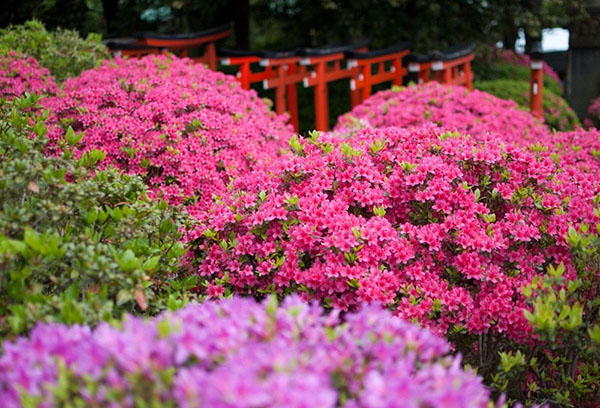
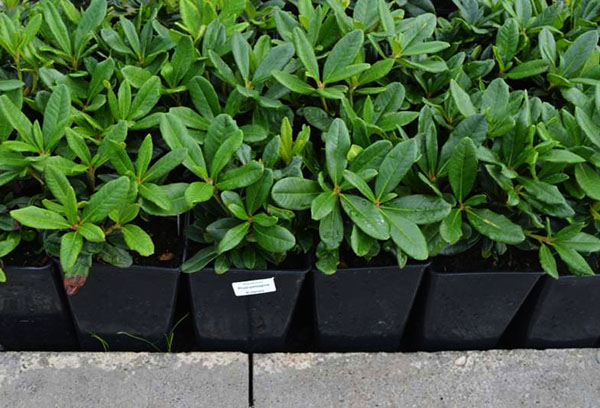
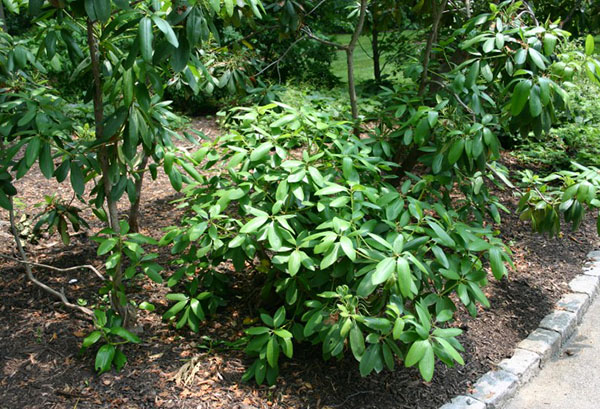
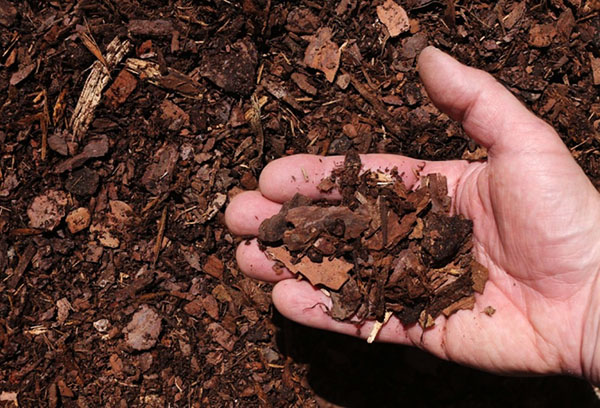
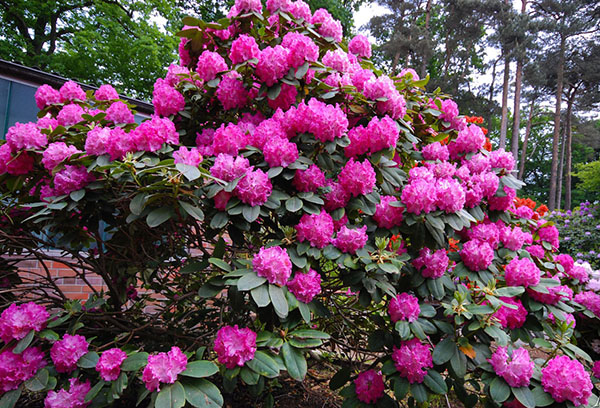
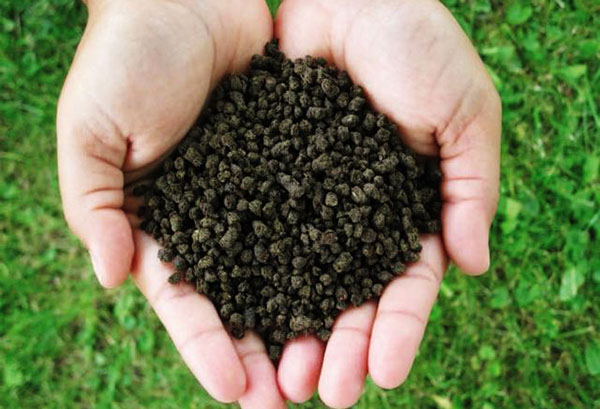
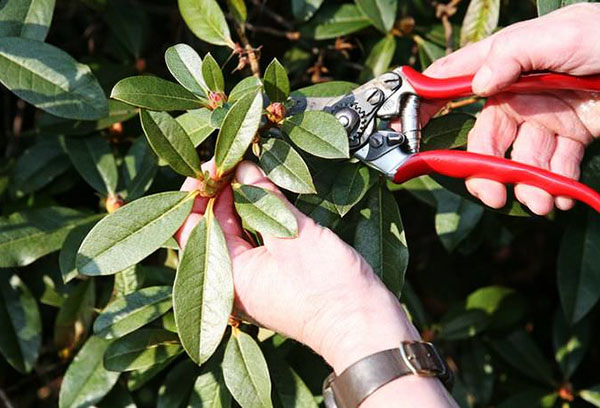
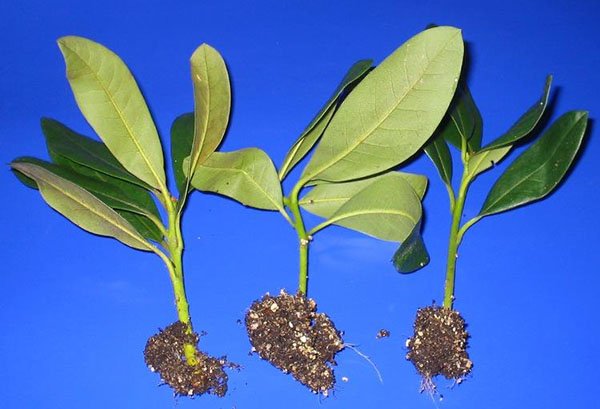
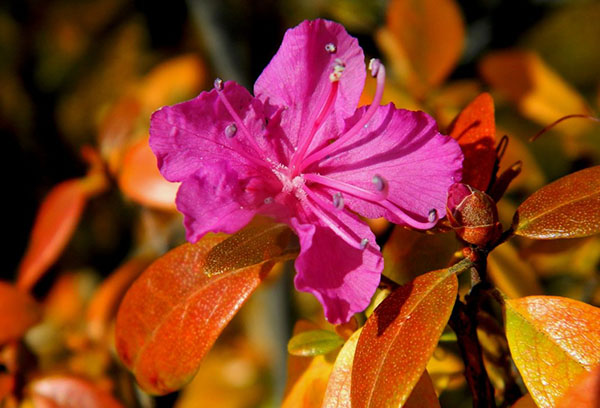
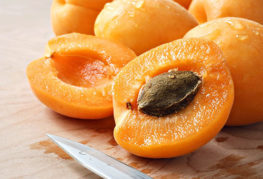

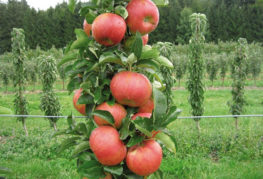
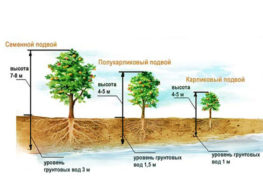
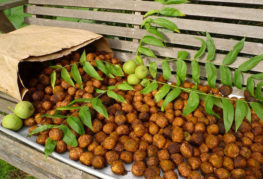
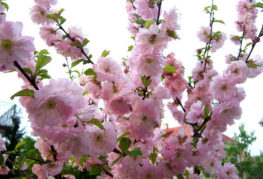
and will be published shortly.